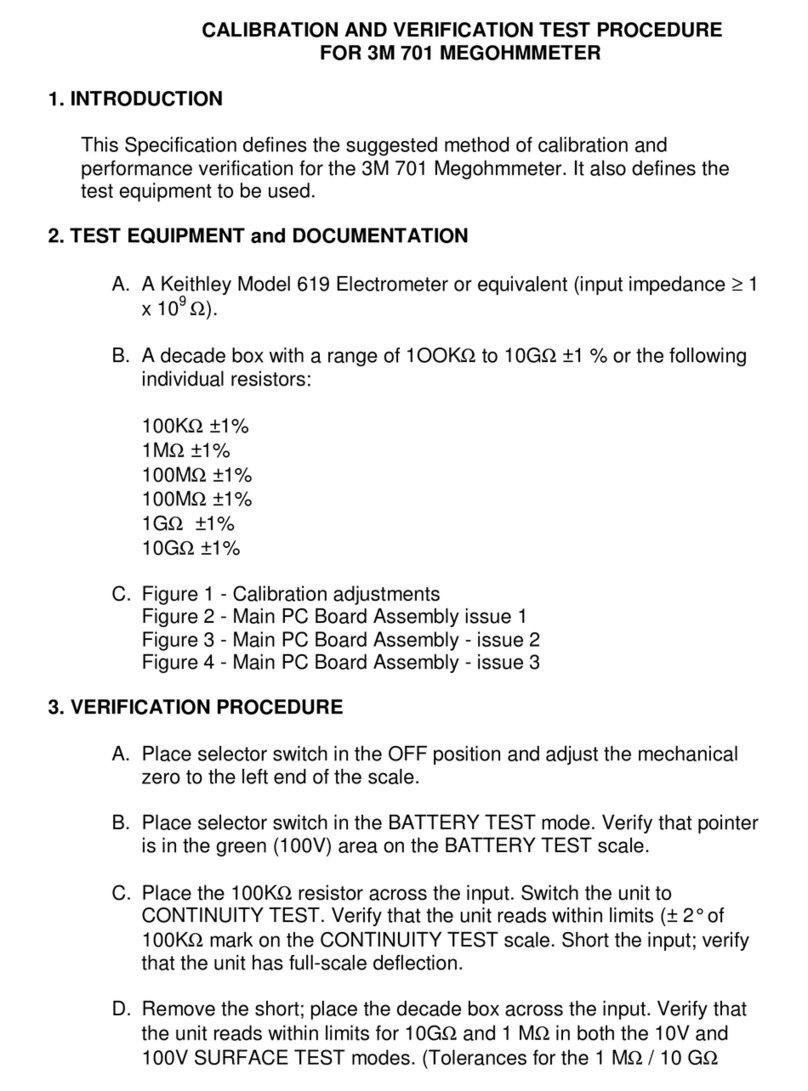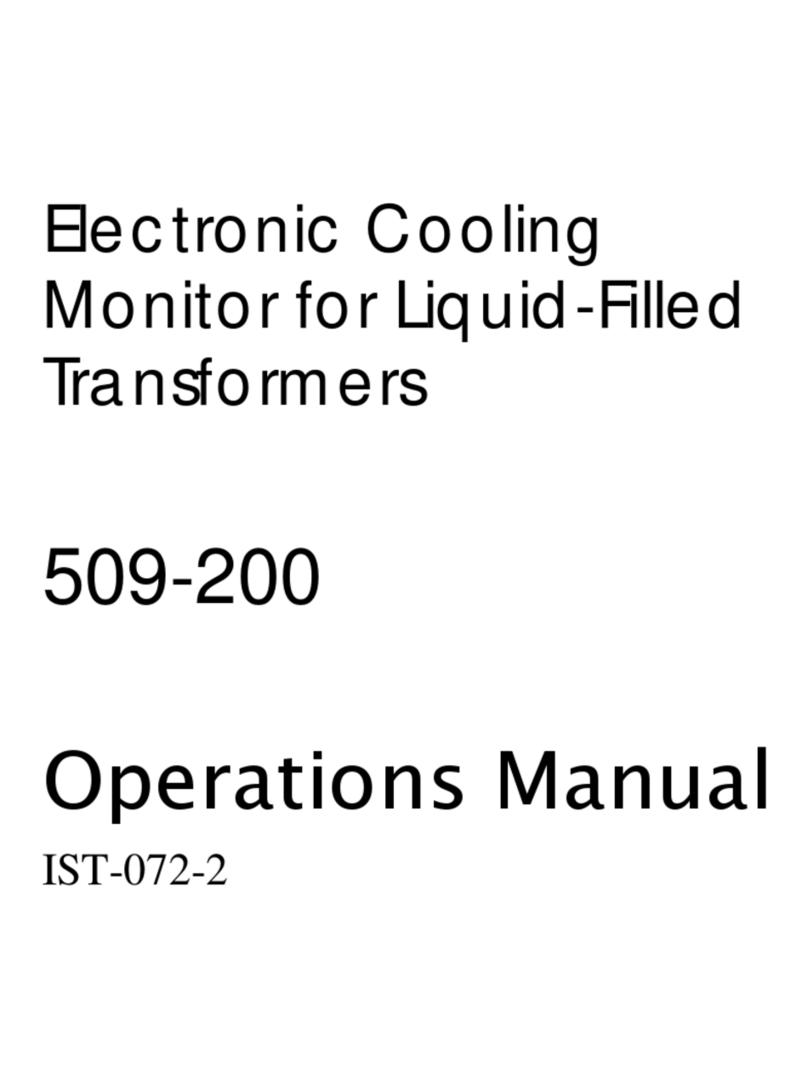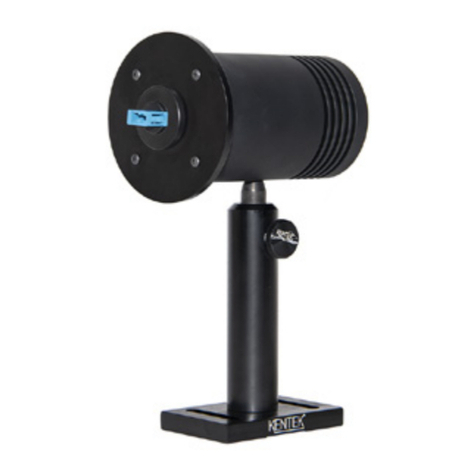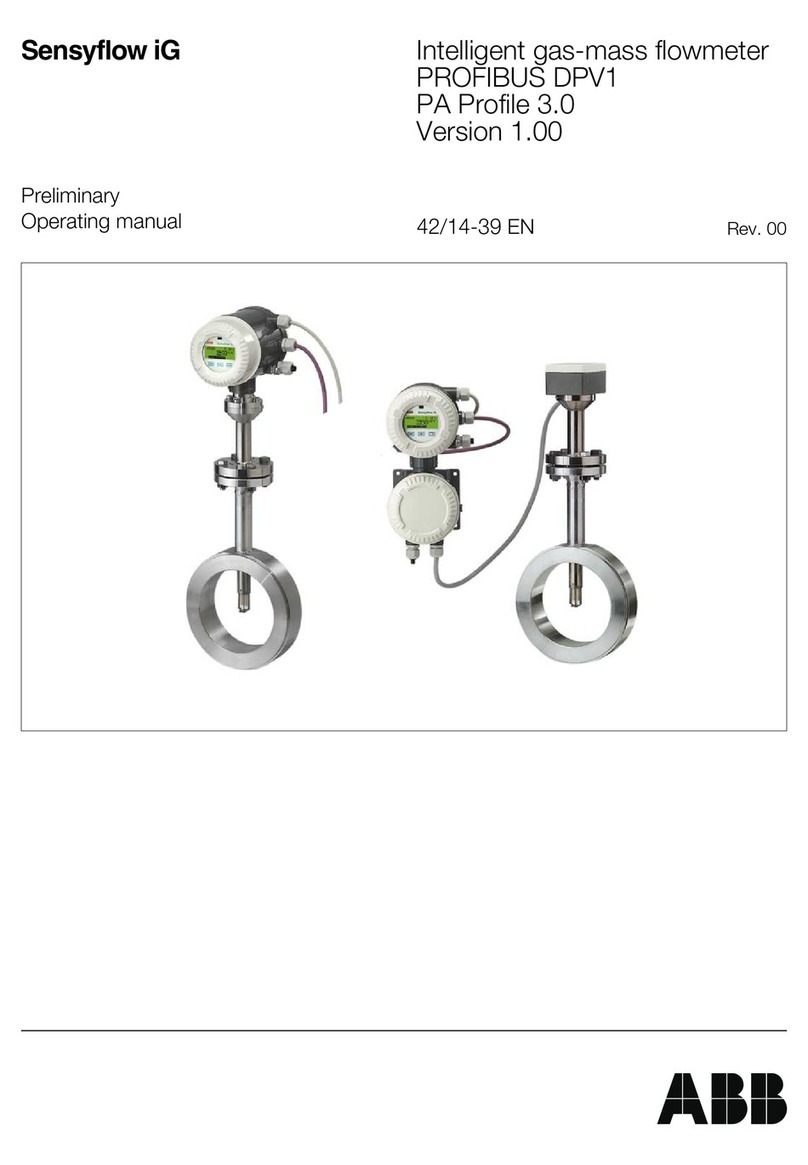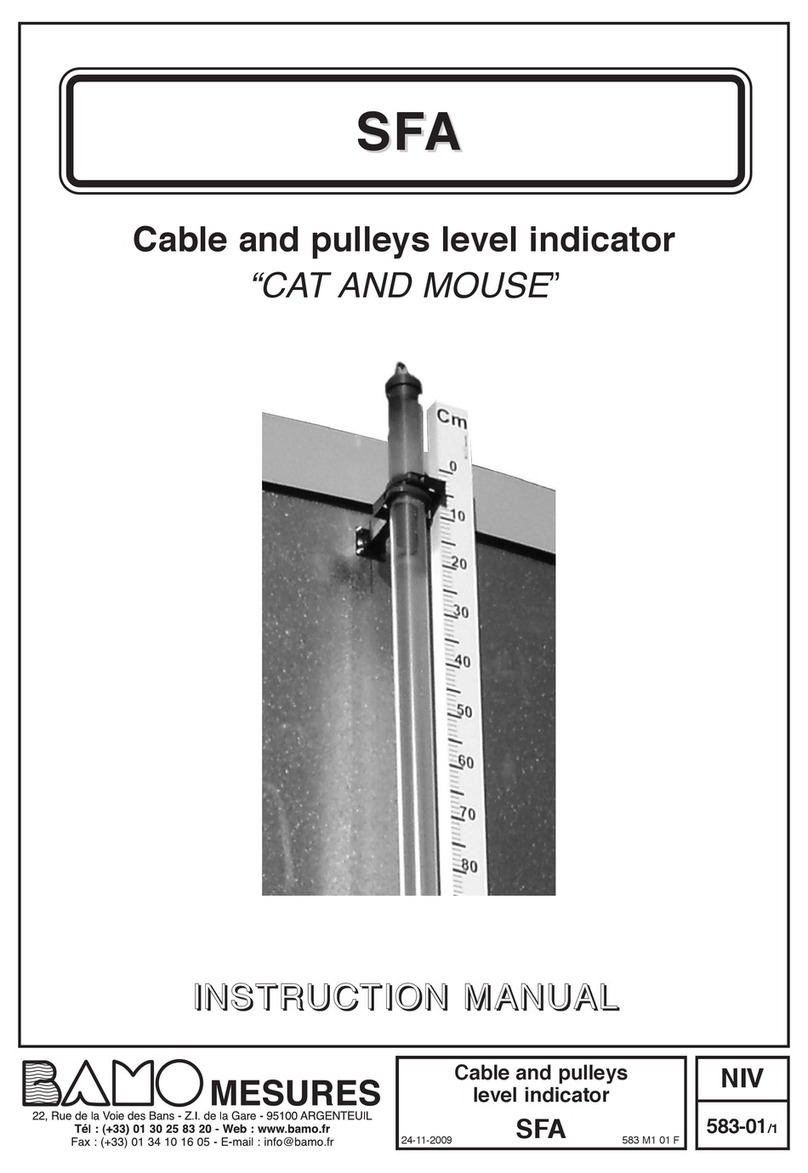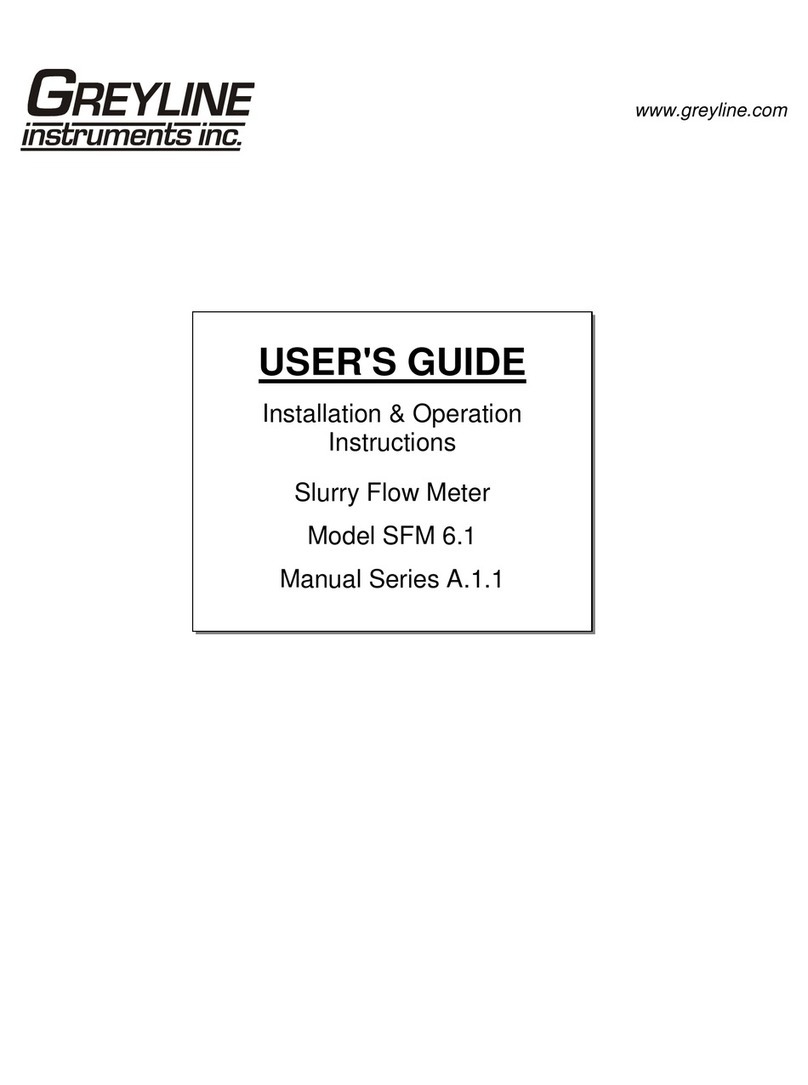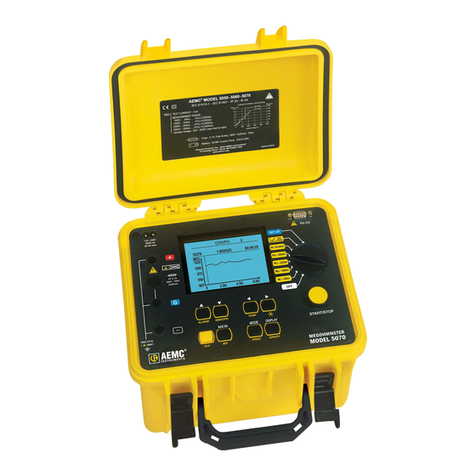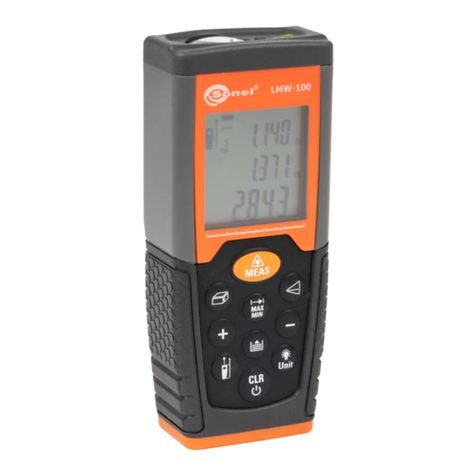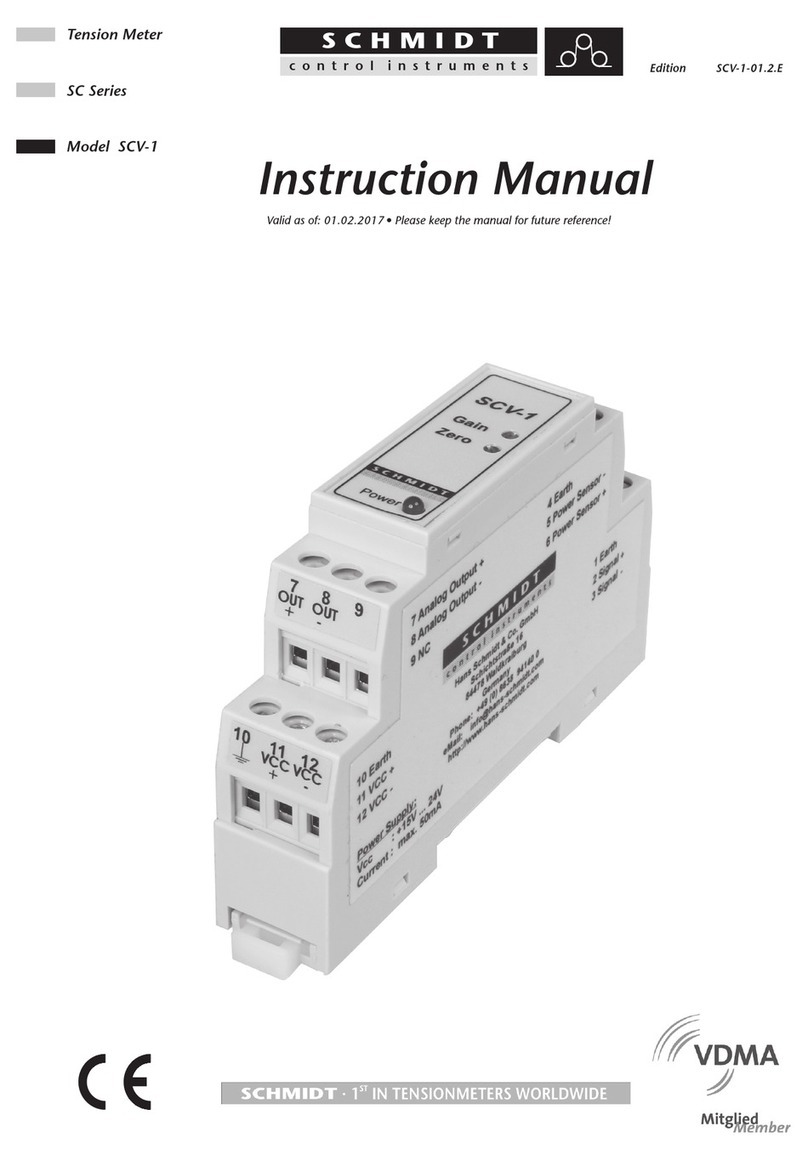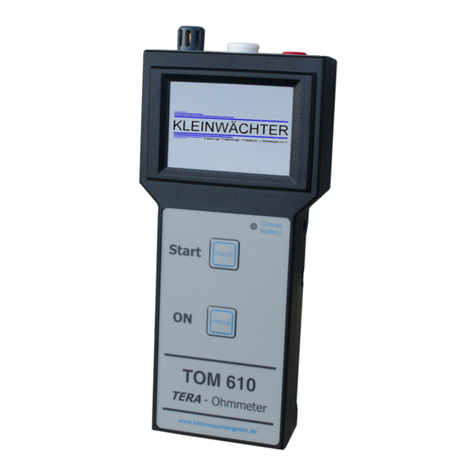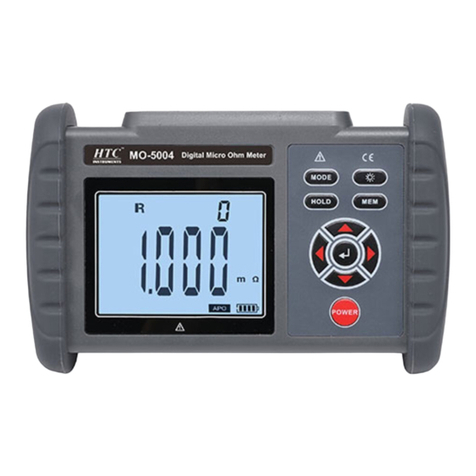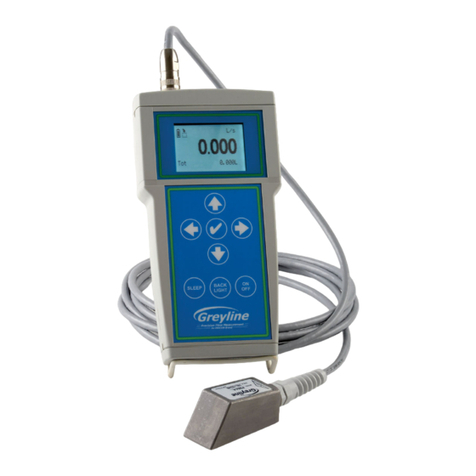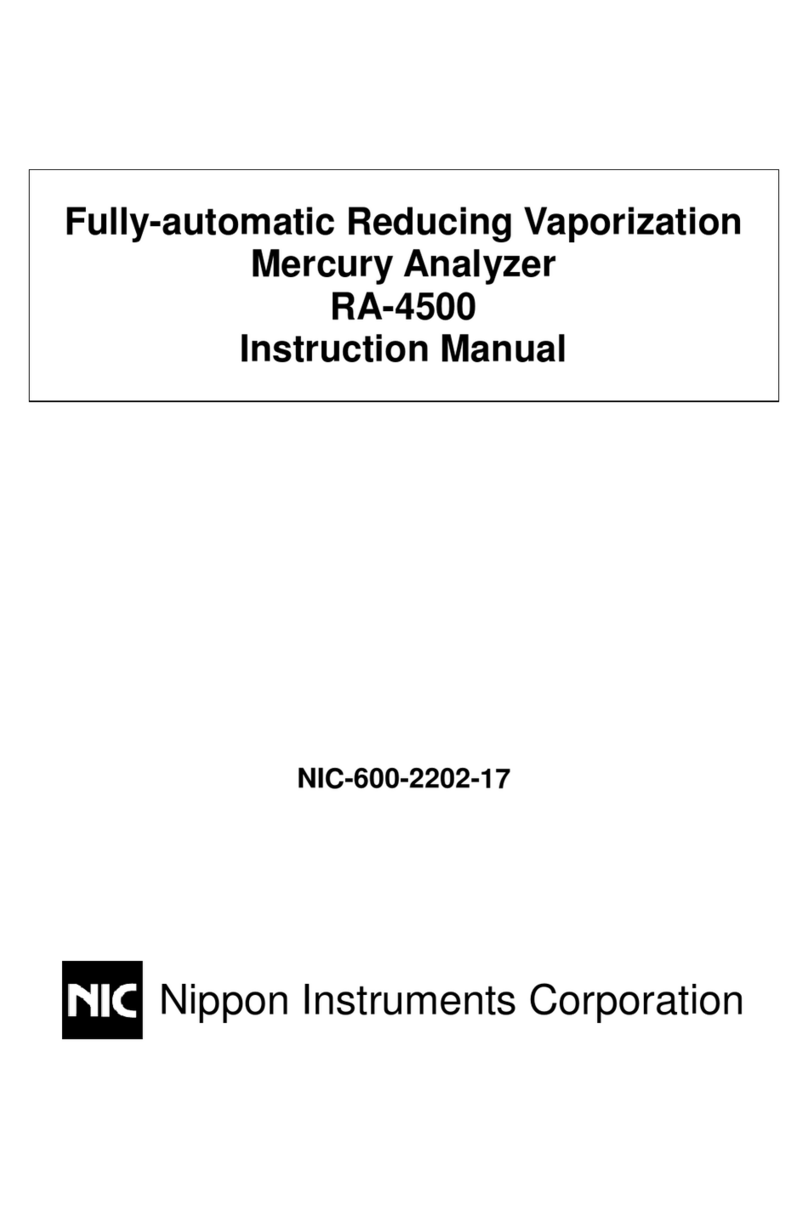EEC SE Series User manual

SE Series
SE 7430/SE 7440/SE 7441/SE 7451/SE 7452
Electrical Safety Analyzer
User Manual
E2.00


WARRANTY
EEC certifies that the instrument listed in this manual meets or exceeds published
manufacturing specifications. This instrument was calibrated using standards that are traceable
to Chinese National Laboratory Accreditation (CNLA).
Your new instrument is warranted to be free from defects in workmanship and material for a
period of (2) year from date of shipment. During the warranty period, you must return the
instrument to EEC or its branches or its authorized distributor for repair. EEC reserves the right
to use its discretion on replacing the faulty parts or replacing the assembly or the whole unit.
Any non-authorized modifications, tampering or physical damage will void your warranty.
Elimination of any connections in the earth grounding system or bypassing any safety systems
will void this warranty. This warranty does not cover batteries or accessories not of EEC
manufacture. Parts used must be parts that are recommended by EEC as an acceptable
specified part. Use of non-authorized parts in the repair of this instrument will void the
warranty.
This warranty does not cover accessories not of EEC manufacture.
Except as provided herein, EEC makes no warranties to the purchaser of this instrument and all
other warranties, express or implied (including, without limitation, merchantability or fitness
for a particular purpose) are hereby excluded, disclaimed and waived.


1. Introduction .................................................................................................1
1.1 Safety Symbols......................................................................................................... 1
1.1.1 Product Marking Symbols........................................................................................1
1.1.2 Caution and Warning Symbols ................................................................................1
1.2 Glossary of Terms .................................................................................................... 2
1.3 Safety ...................................................................................................................... 3
1.3.1 Service and Maintenance ........................................................................................3
1.3.2 Test Station..............................................................................................................3
1.3.3 Test Operator...........................................................................................................4
1.3.4 Instrument Connections ..........................................................................................5
1.3.5 Device Under Test....................................................................................................5
1.3.6 Key Safety Points to Remember ..............................................................................6
1.4 Introduction to Product Safety Testing ..................................................................... 6
1.4.1 The Importance of Safety Testing............................................................................6
1.5 The Different Types of Safety Tests .......................................................................... 7
1.5.1 Dielectric Withstand Test ........................................................................................7
1.5.2 Insulation Resistance Test .....................................................................................10
1.5.3 Ground Bond Test..................................................................................................10
1.5.4 Run Test .................................................................................................................10
1.5.5 Touch Current Test ................................................................................................11
1.6 Key Features and Benefits: SE Series....................................................................... 12
2. Getting Started ........................................................................................... 14
2.1. Unpacking and Inspection..................................................................................... 14
2.1.1 Packaging ...............................................................................................................14
2.1.2 Returning the Instrument......................................................................................14
2.2 Installation............................................................................................................. 14
2.2.1 Work Area..............................................................................................................14
2.2.2 Power Requirements .............................................................................................15
2.2.3 Basic Connections..................................................................................................15
2.2.4 Environmental Conditions ..................................................................................... 15
3. Specifications and Controls......................................................................... 17
3.1 Specifications......................................................................................................... 17
3.2 Instrument Controls............................................................................................... 22
3.2.1 Front Panel Controls ..............................................................................................22
3.2.2 Rear Panel Controls ............................................................................................... 25
4. Programming Instructions........................................................................... 28
4.1 Using the Touch Screen .......................................................................................... 28
4.2 Main Menu............................................................................................................ 29
4.3 Setup System ......................................................................................................... 30
4.3.1 Time and Date........................................................................................................30
4.3.2 Calibration Alert.....................................................................................................31
4.3.3 Hardware ...............................................................................................................33

4.3.4 User Interface.........................................................................................................40
4.3.5 Information ............................................................................................................43
4.3.6 Import and Export System and Test Data ..............................................................43
4.4 SECURITY................................................................................................................46
4.5 FAILCHEK................................................................................................................48
4.5.1 Continuity FAILCHEK (Opt.7002 , Opt.7006)..........................................................48
4.5.2 Ground Bond FAILCHEK..........................................................................................49
4.5.3 AC Hipot FAILCHEK .................................................................................................50
4.5.4 DC Hipot FAILCHEK.................................................................................................51
4.5.5 IR FAILCHEK ............................................................................................................52
4.6 Test Parameters .....................................................................................................53
4.6.1 Description of Test Parameters..............................................................................53
4.6.2 Additional Parameter Notes and Functions...........................................................55
4.7.1 ACW........................................................................................................................58
4.7.2 DCW........................................................................................................................59
4.7.3 IR.............................................................................................................................60
4.7.4 GND ........................................................................................................................60
4.7.5 Continuity (Opt.7002) ............................................................................................61
4.7.6 View Test Files........................................................................................................61
4.7.7 Edit Test Files..........................................................................................................61
4.8 PERFORM TESTS .....................................................................................................62
5. Test Connections.........................................................................................65
5.1 Connecting the Test Leads ......................................................................................65
5.2 Connecting the Adaptor Box...................................................................................65
5.3 Interlock Connector................................................................................................65
6. Results Screens ...........................................................................................66
6.1 Error Messages and Fail Messages ..........................................................................68
7. Connection of Remote I/O ..........................................................................71
7.1 Remote Signal Outputs...........................................................................................71
7.2 Remote Signal Inputs and Memory Access..............................................................72
8. Bus Remote Interface GPIB / USB / RS-232 .................................................75
8.1. RS-232 Interface....................................................................................................75
8.1.1. RS-232 Connector..................................................................................................75
8.1.2. Communications Port Configuration ....................................................................75
8.1.3. Sending and Receiving Commands .......................................................................76
8.2 GPIB Interface (Opt.109).........................................................................................76
8.2.1 GPIB Connector ......................................................................................................76
8.2.2 GPIB Address ..........................................................................................................76
8.3 Interface Functions.................................................................................................77
8.4 USB/RS-232 / GPIB Interface Command List............................................................77
9. CALIBRATION..............................................................................................95

9.1 Warranty Requirements......................................................................................... 95
9.2 Calibration Initialization......................................................................................... 95
9.3 Calibration of Parameters ...................................................................................... 96


1
1. Introduction
1.1 Safety Symbols
1.1.1 Product Marking Symbols
Product will be marked with this symbol when it is necessary to refer to the operation
and service manual in order to prevent injury or equipment damage.
Product will be marked with this symbol when hazardous voltages may be present.
Product will be marked with this symbol at connections that require earth grounding.
1.1.2 Caution and Warning Symbols
Calls attention to a procedure, practice, or condition that could possibly
cause bodily injury or death.
Calls attention to a procedure, practice, or condition that could possibly
cause damage to equipment or permanent loss of data

2
1.2 Glossary of Terms
Alternating Current, AC: Current that reverses direction on a regular basis, commonly in the U.S.A.
60 per second, in other countries 50 times per second.
Breakdown: The failure of insulation to effectively prevent the flow of current sometimes
evidenced by arcing. If voltage is gradually raised, breakdown will begin suddenly at a certain
voltage level. Current flow is not directly proportional to voltage. Once breakdown current has
flown, especially for a period of time, the next gradual application of voltage will often show
breakdown beginning at a lower voltage than initially.
Conductive: Having a volume resistivity of no more than 103 ohm-cm or a surface resistivity of no
more than 105 ohms per square.
Dielectric: An insulating material that is positioned between two conductive materials in such a
way that a charge or voltage may appear across the two conductive materials.
Direct Current, DC: Current that flows in one direction only. The source of direct current is said to
be polarized and has one terminal that is always at a higher potential than the other.
Hipot Tester: Common term for dielectric-withstand test equipment.
Insulation: Gas, liquid or solid material which has a volume resistivity of at least 1012 ohm-cm and
is used for the purpose of resisting current flow between conductors.
Insulation Resistance Tester: An instrument or a function of an instrument capable of measuring
resistance's in excess of 200 megohms. Usually employs a higher voltage power supply than used
in ohmmeters measuring up to 200 megohms.
Leakage: AC or DC current flow through insulation and over its surfaces, and AC current flow
through a capacitance. Current flow is directly proportional to voltage. The insulation and/or
capacitance are thought of as a constant impedance, unless breakdown occurs.
Resistance: That property of a substance that impedes current and results in the dissipation of
power, in the form of heat. The practical unit of resistance is the ohm. Symbol = R
Trip Point: A minimum or maximum parameter set point that will cause an indication of
unacceptable performance during a run test.
Voltage: Electrical pressure, the force which causes current through an electrical conductor.
Symbol = V

3
1.3 Safety
This product and its related documentation must be reviewed for familiarization with safety
markings and instructions before operation.
This product is a Safety Class I instrument (provided with a protective earth terminal).
Before applying power verify that the instrument is set to the correct line voltage and the correct
fuse is installed (Please refer to 3.1 Specifications).
A Hipot produces voltages and currents that can cause harmful or fatal
electric shock. To prevent accidental injury or death, these safety
procedures must be strictly observed when handling and using the test
instrument.
1.3.1 Service and Maintenance
User Service
To prevent electric shock do not remove the instrument cover. There are no user serviceable parts
inside. Routine maintenance or cleaning of internal parts is not necessary. Avoid the use of
cleaning agents or chemicals on the instrument, some chemicals may damage plastic parts or
lettering. Any external cleaning should be done with a clean dry or slightly damp cloth. Schematics,
when provided, are for reference only. Any replacement cables and high voltage components
should be acquired directly from EEC. Refer servicing to EEC customer support department.
Service Interval
The instrument, its power cord, test leads, and accessories must be returned at least once a year
to EEC customer support department for calibration and inspection of safety related components.
EEC will not be held liable for injuries suffered if the instrument is not properly maintained and
safety checked annually.
User Modifications
Unauthorized user modifications will void your warranty. EEC will not be responsible for any
injuries sustained due to unauthorized equipment modifications or use of parts not specified by
EEC. Instruments returned to EEC with unsafe modifications will be returned to their original
operating condition at the customers expense.
1.3.2 Test Station
Location
Select an area away from the main stream of activity which employees do not walk through in
performing their normal duties. If this is not practical because of production line flow, then the
area should be roped off and marked for HIGH VOLTAGE TESTING. No employees other than the
test operators should be allowed inside.
If benches are placed back-to-back, be especially careful about the use of the bench opposite the

4
test station. Signs should be posted: "DANGER - HIGH VOLTAGE TEST IN PROGRESS -
UNAUTHORIZED PERSONNEL KEEP AWAY."
Work Area
Perform the tests on a non-conducting table or workbench, if possible. If you cannot avoid using a
conductive surface, be certain that it is connected to a good earth ground and the high voltage
connection is insulated from the grounded surface.
There should not be any metal in the work area between the operator and the location where
products being tested will be positioned. Any other metal in the work area should be connected to
a good ground, never left "floating".
Position the tester so the operator does not have to reach over the product under test to activate
or adjust the tester. If the product or component being tested is small, it may be possible to
construct guards or an enclosure around the device to be tested. Construct the guards of a non-
conducting material such as clear acrylic, so that the item being tested is within the guards or
enclosure during the test. If possible, the guards or enclosure should also contain safety switches
that will not allow the tester to operate unless the guards are in place or the enclosure closed.
Keep the area clean and uncluttered. All test equipment and test leads not necessary for the test
should be removed from the test bench and put away. It should be apparent to both the operator
and to any observers, the product that is being tested and the product that is waiting to be tested,
or has already been tested.
Do not perform Hipot tests in a combustible atmosphere or in any area where combustible
materials are present.
Power
Dielectric Voltage-Withstand Test Equipment must be connected to a good ground. Be certain that
the power wiring to the test bench is properly polarized and that the proper low resistance
bonding to ground is in place.
Power to the test station should be arranged so that it can be shut off by one prominently marked
switch located at the entrance to the test area. In case of an emergency, anyone can cut off the
power before entering the test area to offer assistance.
1.3.3 Test Operator
Qualifications
This instrument generates voltages and currents that can cause harmful or fatal electric shock and
must only be operated by a skilled worker trained in its use.
The operator should understand the electrical fundamentals of voltage, current, and resistance.
They should recognize that the test instrument is a variable high-voltage power supply with the
return circuit directly connected to earth ground, therefore, current from the high-voltage output

5
will flow through any available ground path.
Rules
Operators should be thoroughly trained to follow all of the aforementioned rules, in addition to
any other applicable safety rules and procedures. Defeating any safety system should be
considered a serious offense with severe penalties such as removal from the Hipot testing job.
Allowing unauthorized personnel in the area during a test should also be dealt with as a serious
offense.
Dress
Operators should not wear jewelry that could accidentally complete a circuit.
Medical Restrictions
Personnel with heart ailments or devices such as pacemakers should be informed that the voltages
and currents generated by the instrument are very dangerous. If contacted it may cause heart-
related problems that a person of good health may not experience. Please have the test operator
consult their physician for recommendations.
1.3.4 Instrument Connections
Never perform a hipot test on energized circuitry or equipment.
The instrument is equipped with a safety ground connection, be sure that this is connected
to a good earth ground.
Always connect the return lead first, regardless of whether the item under test is a sample of
insulating material, a component tested with the high voltage test lead, or a cord-connected
device with a two or three prong plug. The return lead should be connected first for any type of
hipot testing.
Plug in the high voltage test lead only when it is being used. Handle its clip only by the insulator---
never touch the clip directly. Be certain that the operator has control over any remote test
switches connected to the Hipot. Double check the return and high voltage connections from the
Hipot and the Line, Neutral, Ground and Case connections from the Line Leakage tester to be
certain that they are proper and secure.
1.3.5 Device Under Test
Never touch the Device Under Test (DUT) or anything connected to it while
high voltage is being applied by the hipot.

6
When testing with DC, always discharge the capacitance of the item under test and anything the
high voltage may have contacted--such as test fixtures--before handling it or disconnecting the
test leads.
HOT STICK probes can be used to discharge any capacitance in the device under test as a further
safety precaution. A hot stick is a non-conducting rod about two feet long with a metal probe at
the end that is connected to a wire. To discharge the device under test, two hot sticks are
required. First, connect both probe wires to a good earth ground. Then touch one probe tip to the
same place that the return lead was connected. While holding the first probe in place, touch the
second probe tip to the same place where the high voltage lead was connected.
1.3.6 Key Safety Points to Remember
Keep unqualified and unauthorized personnel away from the test area.
Arrange the test station in a safe and orderly manner.
Never touch the product or connections during a test.
In case of any problem, turn off the high voltage first.
Properly discharge any item tested with DC before touching connections.
1.4 Introduction to Product Safety Testing
1.4.1 The Importance of Safety Testing
Product Safety Tests are specified during the design and development stages of a product as well
as in the production of the products to insure that it meets basic safety requirements. These tests
are designed to verify the safety of the electrical products in that they do not jeopardize the safety
of the people, domestic animals, and property of anyone who may come in contact with these
products. In an era of soaring liability costs, original manufacturers of electrical and electronic
products must make sure every item is as safe as possible. All products must be designed and built
to prevent electric shock, even when users abuse the equipment or by-pass built in safety
features.
To meet recognized safety standards, one common test is the "dielectric voltage-withstand test".
Safety agencies which require compliance safety testing at both the initial product design stage
and for routine production line testing include: Underwriters Laboratories, Inc. (UL), the Canadian
Standards Association (CSA), the International Electrotechnical Commission (IEC), the British
Standards Institution (BSI), the Association of German Electrical Engineers (VDE) and (TÜV), the
Japanese Standards Association (JSI). These same agencies may also require that an insulation
resistance test and high current ground bond test be performed.

7
1.5 The Different Types of Safety Tests
1.5.1 Dielectric Withstand Test
The principle behind a dielectric voltage - withstand test is simple. If a product will function when
exposed to extremely adverse conditions, it can be assumed that the product will function in
normal operating circumstances.
Common Applications of the Dielectric Withstand Test:
Design (performance) testing: Determining design adequacy to meet service conditions.
Production Line testing: Detecting defects in material or workmanship during processing.
Acceptance testing: Proving minimum insulation requirements of purchased parts.
Repair Service testing: Determine reliability and safety of equipment repairs.
The specific technique used to apply the dielectric voltage - withstand test to each product is
different. During a dielectric voltage - withstand test, an electrical device is exposed to a voltage
significantly higher than it normally encounters, for a specified duration of time.
During the test, all current flow from the high voltage output to the return is measured. If, during
the time the component is tested, the current flow remains within specified limits, the device is
assumed safe under normal conditions. The basic product design and use of the insulating material
will protect the user against electrical shock.
The equipment used for this test, a dielectric-withstand tester, is often called a "hipot" (for high
potential tester). The "rule of thumb" for testing is to subject the product to twice its normal
operating voltage, plus 1,000 volts.
However, specific products may be tested at much higher voltages than 2X operating voltages +
1,000 volts. For example, a product designed to operate in the range between 100 to 240 volts can
be tested between 1,000 to 4,000 volts or higher. Most "double insulated" products are tested at
voltages much higher than the "rule of thumb".
Testing during development and prototype stages is more stringent than production run tests
because the basic design of the product is being evaluated. Design tests usually are performed on
only a few samples of the product. Production tests are performed on every item as it comes off
the production line.
The hipot tester must also maintain an output voltage between 100% and 120% of specification.
The output voltage of the hipot must have a sinusoidal waveform with a frequency between 40 to
70 Hz and has a peak waveform value that is not less than 1.3 and not more than 1.5 times the
root-mean-square value.
Types of Failures only detectable with a Hipot test

8
Weak Insulating Materials
Pinholes in Insulation
Inadequate Spacing of Components
Pinched Insulation
Dielectric Withstand Test; AC verses DC
Please check with the Compliance Agency you are working with to see which of the two types of
voltages you are authorized to use. In some cases, a Compliance Agency will allow either AC or DC
testing to be done. However, in other cases the Compliance Agency only allows for an AC test. If
you are unsure which specification you must comply with please contact our CUSTOMER SUPPORT
DEPT.
Many safety agency specifications allow either AC or DC voltages to be used during the hipot test.
When this is the case, the manufacturer must make the decision on which type of voltage to
utilize. In order to do this it is important to understand the advantages and the disadvantages of
both AC and DC testing.
AC testing characteristics
Most items that are hipot tested have some amount of distributed capacitance. An AC voltage
cannot charge this capacitance so it continually reads the reactive current that flows when AC is
applied to a capacitive load.
AC testing advantages
AC testing is generally much more accepted by safety agencies than DC testing. The main reason
for this is that most items being hipot tested will operate on AC voltages. AC hipot testing offers
the advantage of stressing the insulation alternately in both polarities, which more closely
simulates stresses the product will see in real use.
Since AC testing cannot charge a capacitive load the current reading remains consistent from
initial application of the voltage to the end of the test. Therefore, there is no need to gradually
bring up the voltage since there is no stabilization required to monitor the current reading. This
means that unless the product is sensitive to a sudden application of voltage the operator can
immediately apply full voltage and read current without any wait time.
Another advantage of AC testing is that since AC voltage cannot charge a load there is no need to
discharge the item under test after the test.
AC testing disadvantages
One disadvantage of AC testing surfaces when testing capacitive products. Again, since AC cannot
charge the item under test, reactive current is constantly flowing. In many cases, the reactive
component of the current can be much greater than the real component due to actual leakage.

9
This can make it very difficult to detect products that have excessively high leakage current.
Another disadvantage of AC testing is that the hipot has to have the capability of supplying
reactive and leakage current continuously. This may require a current output that is actually much
higher than is really required to monitor leakage current and in most cases is usually much higher
than would be needed with DC testing. This can present increased safety risks as operators are
exposed to higher currents.
DC testing characteristics
During DC hipot testing the item under test is charged. The same test item capacitance that causes
reactive current in AC testing results in initial charging current which exponentially drops to zero in
DC testing.
DC testing advantages
Once the item under test is fully charged, the only current flowing is true leakage current. This
allows a DC hipot tester to clearly display only the true leakage of the product under test.
Another advantage to DC testing is that the charging current only needs to be applied
momentarily. This means that the output power requirements of the DC hipot tester can typically
be much less than what would be required in an AC tester to test the same product.
DC testing disadvantages
Unless the item being tested has virtually no capacitance, it is necessary to raise the voltage
gradually from zero to the full test voltage. The more capacitive the item the more slowly the
voltage must be raised. This is important since most DC hipots have failure shut off circuitry which
will indicate failure almost immediately if the total current reaches the leakage threshold during
the initial charging of the product under test.
Since a DC hipot does charge the item under test, it becomes necessary to discharge the item after
the test.
DC testing unlike AC testing only charges the insulation in one polarity. This becomes a concern
when testing products that will actually be used at AC voltages. This is an important reason that
some safety agencies do not accept DC testing as an alternative to AC.
When performing AC hipot tests the product under test is actually tested with peak voltages that
the hipot meter does not display. This is not the case with DC testing since a sinewave is not
generated when testing with direct current. In order to compensate for this most safety agencies
require that the equivalent DC test be performed at higher voltages than the AC test. The
multiplying factor is somewhat inconsistent between agencies which can cause confusion
concerning exactly what equivalent DC test voltage is appropriate.

10
1.5.2 Insulation Resistance Test
Some "dielectric analyzers today come with a built in insulation resistance tester. Typically, the IR
function provides test voltages from 500 to 1,000 volts DC and resistance ranges from kilohms to
gigaohms. This function allows manufacturers to comply with special compliance regulations.
BABT, TÜV and VDE are agencies that may under certain conditions, require an IR test on the
product before a Hipot test is performed. This typically is not a production line test but a
performance design test.
The insulation resistance test is very similar to the hipot test. Instead of the go/no go indication
that you get with a hipot test the IR test gives you an insulation value usually in Megohms.
Typically, the higher the insulation resistance value the better the condition of the insulation. The
connections to perform the IR test are the same as the hipot test. The measured value represents
the equivalent resistance of all the insulation which exists between the two points and any
component resistance which might also be connected between the two points.
Although the IR test can be a predictor of insulation condition it does not replace the need to
perform a dielectric withstand test.
1.5.3 Ground Bond Test
The Ground Bonding test determines whether the safety ground circuit of the product under test
can adequately handle fault current if the product should ever become defective. A low
impedance ground system is critical in ensuring that in case of a product failure, a circuit breaker
on the input line will act quickly to protect the user from any serious electrical shock.
International compliance agencies such as CSA, IEC, TÜV, VDE, BABT and others, have
requirements calling out this test. This test should not be confused with low current continuity
tests that are also commonly called out in some safety agency specifications. A low current test
merely indicates that there is a safety ground connection. It does not completely test the integrity
of that connection.
Compliance agency requirements vary on how different products are to be tested. Most
specifications call for test currents of between 10 and 40 amps. Test voltages at these currents are
typically required to be less than 12 volts. Maximum allowable resistance readings of the safety
ground circuit are normally between 100 and 200 milliohms.
If you are testing a product that is terminated in a three-prong plug, you are required to perform a
continuity or ground bond test on the ground conductor to the chassis or dead metal of the
product.
1.5.4 Run Test
All manufacturers of a product that runs on line power normally need to run the DUT (Device
Under Test) after final safety testing so that they can verify the functionality of their products. In
addition to running the DUT to test its basic functionality many customers also require some basic
test data to be recorded while the DUT is powered up. A Run Test System allows the product to be

11
powered up immediately after the safety tests are completed with a single connection to the DUT.
Measurements that are commonly made while the DUT is running can include Amperage, Voltage,
Watts and Power Factor.
1.5.5 Touch Current Test
The Line Leakage test is one of many product safety tests that are normally specified for electrical
products by safety testing agencies such as Underwriters Laboratories (UL) and the International
Electrotechnical Committee (IEC). The line leakage specifications vary as well as the method in
which the measurements are taken depending upon the application or function of a product and
the standard to which the product is being tested.
Current Leakage or Line Leakage tests are general terms that actually describe three different
types of tests. These tests are Earth Leakage Current, Enclosure Leakage Current, and Applied Part
Leakage Current. The main differences in these tests are in the placement of the probe for the
measuring device. The Earth Leakage Current is the leakage current that flows through the ground
conductor in the line cord back to earth. The Enclosure Leakage Current is the current that flows
from any enclosure part through a person back to ground if it were contacted by a person. The
Applied Part Leakage Current or Patient Lead Leakage Current is any leakage that flows from an
applied part, between applied parts or into an applied part. The Applied Part Leakage Current test
is required only for medical equipment. All of these tests are used to determine if products can be
safely operated or handled without posing a shock hazard to the user.
Line Leakage Testers provide the capability of meeting the line leakage test specified in the
following standards; UL 544, IEC 950, UL 1950, IEC 601-1, UL 2601, UL 1563, UL 3101, IEC 1010 and
others. The Line Leakage test, is a test which measures the leakage current of a product, through a
circuit that is designed to simulate the impedance of the human body. The simulation circuit is
called the Measuring Device (MD). The instrument has five different MD circuits, selectable
through the menu, which are representative circuits designed to simulate the impedance of the
human body under different conditions. The impedance of the human body will vary depending
upon point of contact, the surface area of the contact and the path the current flows. For these
reasons, the specifications of the Measuring Devices are different depending upon the type of test
being performed as well as the maximum allowable leakage current. Leakage current
measurements are performed on products under normal conditions and single fault conditions as
well as reversed polarity. This simulates possible problems, which could occur if the product under
test is faulted or misused while the product is operating under high line conditions (110% of the
highest input voltage rating of the product).
Line Leakage tests are normally specified as “Type Tests” or “Design Tests” which are performed
during the development of the product. This helps verify that the design is safe but it does not
guarantee the safety of the products being produced on the production line. The only way to be
sure you are shipping safe products is to test each product at the end of the production line. The
user may perform a Leakage Current test along with other common safety test such as Dielectric
Withstand, Insulation Resistance, and Ground Bond on the production line with a single
connection to the device under test.

12
1.6 Key Features and Benefits: SE Series
1.CAL-ALERT
Alerts the operator that the machine is due for
calibration in advance of the calibration due date.
2.TWO CONTINUITY TEST MODES
Two test modes allow for a basic Continuity test to be
performed simultaneously with the Hipot test, or a
stand-alone Continuity test to be performed
independently for higher resistance and point-to-point
applications.
3.PATENTED SMARTGFI
SmartGFI™ disables the instrument’s output voltage in
less than 1 millisecond if excessive leakage to ground
is detected. If enabled, SmartGFI™ automatically
detects if the DUT is floating or grounding and turns
ON or OFF accordingly.
4.SECURITY ACCESS
Allows the operator to set different levels of access to
the instrument’s setup programs. Users can setup
passwords for restricting access to certain parts of the
menu.
5.EXPANDED TEST MEMORIES
User can link up to 200 steps in a single test file with a
total of 2000 steps available in memory.
6.REAL CURRENT MEASUREMENT
SE simultaneously monitors real and total current in
AC Hipot mode on the same screen.
7.EXCLUSIVE PROMPT AND HOLD
FUNCTION
SE allows operators to setup a user-configured
message that is displayed in between test steps. This is
a very convenient feature for applications where test
leads need to be moved or when DUT switches need
to be activated as part of the test cycle.
8.DIGITALLY CONTROLLED ARC
DETECTION SYSTEM
Allows the operator to choose whether low-level arcs
should be detected. The operator can select from
multiple sensitivity levels.
9.ELECTRONIC RAMPING (UP AND
DOWN)
Allows the operator to linearly increase or decrease
the output voltage to the DUT over a specified period
of time. Minimizes any damage to sensitive DUT’s
from quick high voltage changes.
10.PLC REMOTE INPUTS &
OUTPUTS
Two standard 9 pin interfaces provide outputs for
PASS, FAIL, RESET and TEST IN PROCESS signals. Inputs
include TEST, INTERLOCK, RESET and remote recall of
MEMORIES 1 - 3. Provides the user with the ability to
This manual suits for next models
5
Table of contents
Other EEC Measuring Instrument manuals

